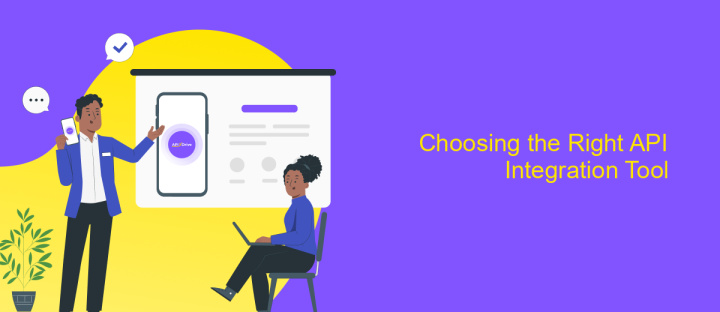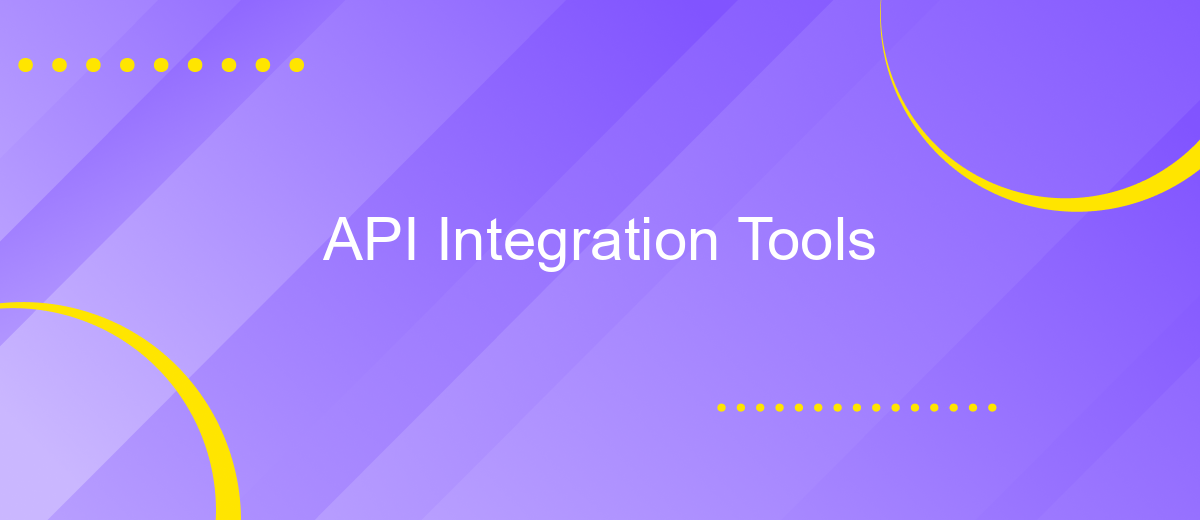API Integration Tools
API integration tools have become essential in today's digital landscape, enabling seamless communication between disparate software systems. These tools simplify the process of connecting various applications, allowing businesses to automate workflows, enhance productivity, and deliver better user experiences. By leveraging API integration tools, organizations can reduce development time, minimize errors, and stay agile in a rapidly evolving technological environment. Explore the benefits and key features of these indispensable tools in this article.
Introduction to API Integration Tools
API integration tools have become essential in the modern technological landscape, facilitating seamless communication between different software systems. These tools enable businesses to automate workflows, enhance productivity, and provide better services by connecting disparate applications. As companies increasingly rely on multiple software solutions to handle various operations, the need for efficient API integration tools becomes more pronounced, ensuring that data flows smoothly and securely across platforms.
- Improved efficiency by automating data transfer between systems.
- Enhanced scalability allowing businesses to grow without system limitations.
- Increased flexibility by enabling customization and adaptability of software solutions.
- Reduced errors through consistent and reliable data synchronization.
Choosing the right API integration tool is crucial for any organization looking to optimize its digital infrastructure. These tools not only streamline operations but also open up new possibilities for innovation and expansion. By leveraging the power of API integration, businesses can stay competitive in a rapidly evolving market, ensuring that their systems are both robust and adaptable to future needs.
Key Features and Functionality

API integration tools are designed to streamline the process of connecting various software applications, enhancing their functionality and enabling seamless data exchange. These tools offer user-friendly interfaces that allow both technical and non-technical users to set up integrations without extensive coding knowledge. Key features include pre-built connectors for popular applications, real-time data synchronization, and automated workflows that reduce manual intervention, thus increasing efficiency.
Advanced functionalities often include customizable triggers and actions, allowing users to tailor integrations to their specific needs. For instance, ApiX-Drive provides a platform where users can easily configure integrations through a simple step-by-step interface, eliminating the need for complex programming. This service supports a wide range of applications, offering flexibility and scalability for businesses of all sizes. Additionally, robust error handling and monitoring features ensure that any issues are promptly identified and resolved, maintaining the integrity and reliability of the integrated systems.
Types of API Integration Tools

API integration tools are essential for connecting different software systems, enabling seamless data exchange and automation. These tools come in various types, each suited to different needs and technical capabilities. Understanding the types of API integration tools can help businesses choose the right solution for their specific requirements.
- Connector-based Tools: These tools provide pre-built connectors for popular APIs, allowing users to easily link applications without deep technical knowledge.
- Custom API Development Platforms: Designed for developers, these platforms offer flexibility to build custom integrations tailored to specific business processes.
- Integration Platform as a Service (iPaaS): Cloud-based solutions that facilitate complex integrations across multiple systems, offering scalability and ease of management.
- Middleware Solutions: Serve as an intermediary layer that manages communication between different applications, often used in enterprise environments.
Choosing the right API integration tool depends on factors such as the complexity of the integration, technical expertise available, and budget constraints. By assessing these factors, businesses can implement efficient integrations that enhance productivity and streamline operations. Whether opting for simple connectors or advanced iPaaS solutions, the right tool can significantly impact a company’s digital transformation journey.
Choosing the Right API Integration Tool

When selecting an API integration tool, it's crucial to consider various factors that align with your business needs. The right tool can streamline operations, enhance connectivity, and drive innovation. A thorough evaluation process will help ensure the tool you choose can scale with your growing demands.
Begin by assessing the tool's compatibility with your existing systems and its ability to support the APIs you plan to integrate. Ensure it offers robust security features to protect sensitive data and complies with industry standards. Additionally, consider the tool's usability, as a user-friendly interface will facilitate smoother adoption across teams.
- Scalability: Can the tool handle an increase in API calls as your business grows?
- Customization: Does it allow for tailored integrations specific to your workflows?
- Support and Documentation: Is there adequate support and comprehensive documentation available?
- Cost: Does the pricing align with your budget, and does it offer a good return on investment?
Ultimately, the right API integration tool should not only meet your current requirements but also adapt to future changes. By carefully evaluating these factors, you can select a tool that enhances your technological infrastructure and supports your long-term goals.
Best Practices and Considerations
When implementing API integration tools, it's crucial to prioritize security and scalability. Ensure that your API keys and tokens are stored securely, and consider using encryption to protect sensitive data. Additionally, plan for scalability by choosing tools that can handle increased loads as your business grows. Regularly update your integration tools to benefit from the latest security patches and features.
Another best practice is to focus on user-friendly solutions that simplify the integration process. For instance, platforms like ApiX-Drive offer intuitive interfaces that streamline connecting multiple applications without extensive coding knowledge. This not only saves time but also reduces the risk of errors. It's also important to thoroughly test integrations in a controlled environment before deploying them live. This helps identify potential issues and ensures seamless operation. Lastly, maintain comprehensive documentation for your integrations to facilitate easier troubleshooting and future updates.
FAQ
What is an API integration tool?
How do API integration tools work?
What are the benefits of using API integration tools?
Can API integration tools be used by non-developers?
What should I consider when choosing an API integration tool?
Apix-Drive will help optimize business processes, save you from a lot of routine tasks and unnecessary costs for automation, attracting additional specialists. Try setting up a free test connection with ApiX-Drive and see for yourself. Now you have to think about where to invest the freed time and money!

